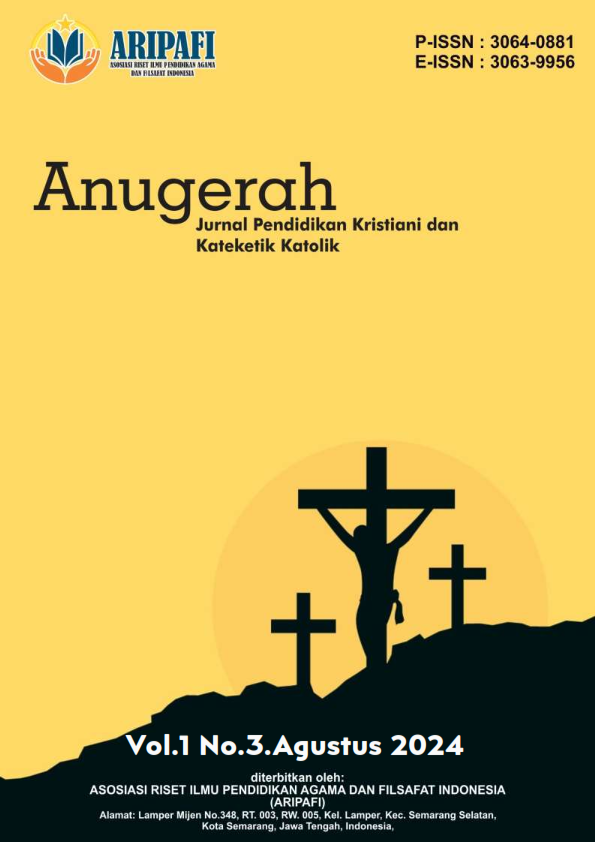Religion and Culture Education: Understanding the Interplay and Significance
DOI:
https://doi.org/10.61132/anugerah.v1i3.43Keywords:
Religion, Culture, Education, Religious Literacy, Cultural Literacy, Intercultural Understanding, Global CitizenshipAbstract
Religion and culture are closely interconnected facets of human society that exert a profound influence on individuals' belief systems, moral principles, and actions. The discipline of religious and cultural education plays a pivotal role in advancing intercultural comprehension, cultivating societal unity, and creating a sense of global citizenship. This academic paper examines the dynamic relationship between religion and culture within educational environments, underscoring the significance of integrating religious and cultural literacy within formal educational institutions. This research is to present a comprehensive analysis of the contemporary status of education in religion and culture. To achieve this objective, a wide range of scholarly sources, including as academic journals, books, and educational reports, have been consulted. The primary focus of this study is to identify the existing obstacles in religion and culture education and propose recommendations for its successful implementation.
References
Bell, C. (1997). Ritual theory, ritual practice. Oxford University Press.
Eck, D. L. (2001). A new spiritual America: How a "Christian Country" has become the world's most religiously diverse nation. HarperOne.
Geertz, C. (1973). The interpretation of cultures: selected essays. Basic Books.
Hervieu-Leger, D. (2000). Religion as a chain of memory. Polity.
Interfaith Youth Core. (n.d.). Retrieved from https://www.ifyc.org/
Jackson, R. (2015). Experiencing religious education: A case study in the art of teaching. British Journal of Religious Education, 37(2), 188-201.
Joseph, S. (2012). Islam in America: Examining the Cultural Influence on Religious Practices. Journal of Islamic Studies, 19(1), 45-62.
Mutcherson, K., Yun, P. H., & Bonner, E. M. (2019). Teaching intercultural literacy: Using technology in religious studies courses. Teaching Theology & Religion, 22(3), 183-199.
Nolan, R. (2019). Educating for religious diversity and social cohesion: Strategies for inclusive and transformative learning. Springer.
Ortner, S. B. (2006). Anthropology and social theory: Culture, power, and the acting subject. Duke University Press.
Sharma, A. (1999). Women, Gender, and World Religions: Cultural Influences on Religious Practices. Journal of Feminist Studies in Religion, 15(2), 89-105.
Smart, N. (1996). Dimensions of the sacred: An anatomy of the world's beliefs. University of California Press.
Smith, J. Z. (1991). Imagining religion: From Babylon to Jonestown. University of Chicago Press.
Taylor, C. (1994). The politics of recognition. In A. Gutmann (Ed.), Multiculturalism: Examining the politics of recognition (pp. 25-73). Princeton University Press.
University of Toronto Multi-Faith Centre. (n.d.). Retrieved from https://www.utoronto.ca/multifaith
Vertovec, S. (2007). Multiculturalism, Religion, and Diaspora. Religion and Diaspora, 327-355.
Yinger, J. M. (1970). The Scientific Study of Religion. Macmillan.





